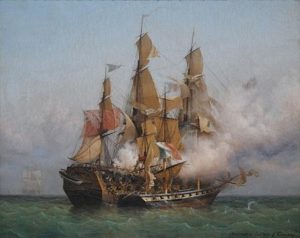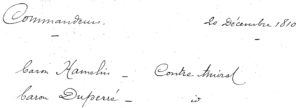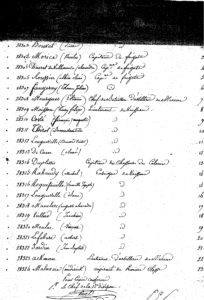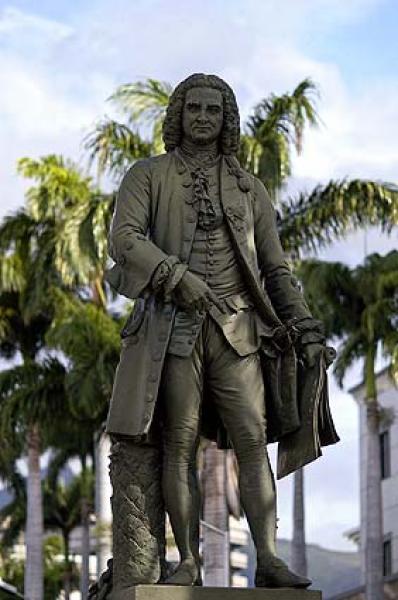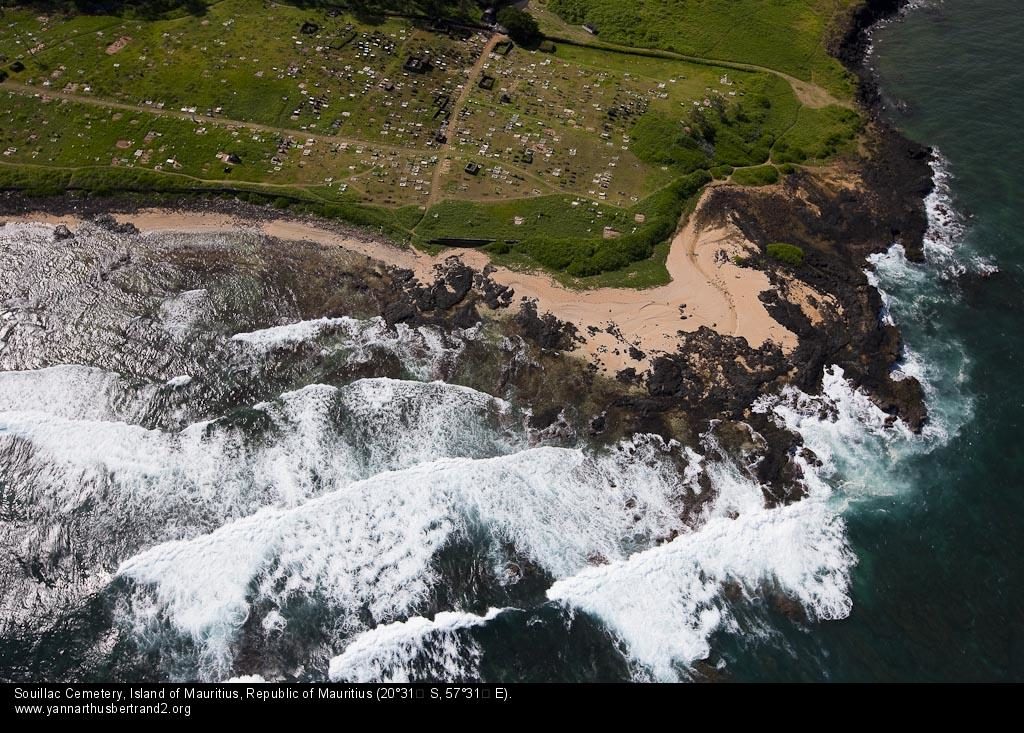For a few weeks, I’ve been trying to reconcile the reference in BN3 (the third of the papers associated with Bernardin Nageon de l’Estang, but which I firmly believe was written much later by someone I call the Missing Corsair) to the “Apollon” with any of the Legionnaires d’Honneur who fit the reference to being honoured for a “glorious feat of arms” (also in BN3).
The issue is that none of these men is also in the crew list for the Apollon’s final journey in 1798: I’ve gone over it numerous times, but there is simply no overlap. It seems to be an intractable problem that might even – in the worst case – point away from the whole Missing Corsair narrative.
Yet, of all the Indian Ocean Legionnaires d’Honneur honoured on 20th December 1810, the best candidate by far for our Missing Corsair is Joachim Vieillard. Vieillard was, without any real doubt, a corsair: and there is documentary evidence (in Charles Cunat’s account, which I’ve seen quoted but have yet to read for myself) that Vieillard served under the famous corsair captain Robert Surcouf on La Confiance.
Here’s the famous picture of La Confiance as painted by Louis Garneray:
Garneray – for all his wobbliness and unreliability – does also mention Vieillard as having been on La Confiance in his (1851) Voyages (p.101):
Je restai assez intimidé en me trouvant dans un grand salon rempli de monde ; mais je me remis bientôt en reconnaissant parmi les personnes présentes plusieurs de mes connaissances, entre autres les enseignes Roux, Fournier et Viellard, et le contremaître Gilbert, qui tous avaient navigué avec moi sur la Preneuse.
(Note that Garneray spells Vieillard’s surname “Viellard”, which is why I didn’t spot it first time round. Garneray mentions Vieillard at least four more times.)
So: even if (heeding Auguste Toussaint’s warning) we keep our reliance on Garneray’s account to a minimum, I’d still say that we have enough other evidence to firmly place Vieillard on La Confiance under Robert Surcouf.
The Crew List for La Confiance
Hence this morning I went looking for a crew list for La Confiance: and the first port of call (as almost always) was H.C.M.Austen’s “Sea Fights and Corsairs of the Indian Ocean”. Helpful to a fault, Austen writes (p.85):
The first voyage of the Confiance under Surcouf began in April, 1800. His chief officer on this occasion was Captain Drieu. […] Serving on board as officers were Louvel-Desvaux (lieutenant of the watch), Le Nouvel (surgeon-major) – all three fellow citizens and friends of their captain: ensigns Fournier, Roux, and Vieillard, and Gilbert the boatswain, (formerly boatswain’s mate in the frigate Preneuse) and Le Goff, the pilot […]. Amongst the new officers were the first lieutenant, Dumaine de la Josserie (of St Malo), Millien, the second surgeon, lieutenants Laboire, Plasan, and Puche, ensigns Boarbon, Bléas, and the pilots d’Autichamp and d’Amphernet.
Austen’s account of Surcouf was “mainly abstracted” (p.74) from ‘Robert Surcouf d’après des documents authentiques’, written by Surcouf’s nephew (also called Robert Surcouf) and published in Paris in 1889, though also with ‘assists’ from Louis Garneray’s colourful (but frequently fanciful) memoirs.
The source for this particular part, however, can also be found in “Les marins français : vies et récits dramatiques, d’après les documents originaux” by Bathild Bouniol (which I found behind a geneanet.org paywall, but once again is supposedly in the Internet Archive), pp.284-285:
L’équipage se composait de cent soixante Européens, vingt-cinq volontaires du bataillon de Bourbon, et quelques nègres domestiques, tous de ces hommes trempés d’acier comme il en fallait à Surcouf. L’état-major ne comptait que des officiers d’élite : Drieux, second capitaine, Louvel Desvaux, lieutenant de garde, Lenouvel, chirurgien-major, Fournier, Roux, Vieillard, enseignes; dans la maistrance, maitre Gilbert, ancien contre-maître de La Preneuse; le pilote Le Goff, breton, laissé à l’île de France par l’escadre victorieuse du bailli de Suffren.
Bouniol then immediately recaps the anecdote about Surcouf and the shark as given by Charles Cunat, so there is a fairly high chance that this crew list was directly recapped by Cunat in his book, because it doesn’t seem to appear in Garneray’s account. All the same, I’ll confirm this when my copy of Cunat’s book arrives in a few days’ time.
“L’Apollon des Oceans”?
Much as I hate to rely upon Louis Garneray for anything (Toussaint would surely throw up his hands in disdain at this point), Garneray does proffer one small piece of relevant-sounding information that might tie up many of the loose strands.
In his “Voyages“, Garneray recalls a conversation with Ripeau de Montaudevert (p.104):
— Eh bien, me dit Monteaudevert lorsque nous sortîmes ensemble, êtes-vous content ? Vous voilà attaché en qualité d’aide de camp au seul homme qui puisse et sache dominer la chance et commander au hasard ! Que le diable m’emporte si une seule croisière avec lui ne vous dédommage pas amplement de vos ennuis passés… Mais voulez-vous venir à présent avec moi à la Pointe-aux-Forges, où l’on s’occupe à réespalmer la Confiance, c’est le nom du navire que commande Surcouf… cette vue vous fera plaisir, car je ne connais rien qui approche, pour la perfection des formes, de ce navire, que l’on a surnommé l’Apollon de l’Océan.
So it would seem – reservations about Garneray notwithstanding – that La Confiance was also known as “L’Apollon de l’Océan”. (Note that the French Wikipedia page for La Confiance incorrectly notes this as “l’Apollon des Océans”).
And if this is correct, then it does offer a very satisfying alternative explanation as to what Joachim Vieillard (if, as I suspect, he was indeed the Missing Corsair) was referring to in BN3:
In my adventurous life before embarking on the Apollon, I was one of those pirates who did so much harm to our enemies Spain and England.
According to the only obituary notice we have, Joachim Vieillard was born in 1782, and would have joined La Confiance in 1800 at the age of 18: so could easily have had several years’ worth of piracy under his belt by then. Which would all seem to join up into a sensible narrative.
But the ship he was on immediately before joining La Confiance would seem to be (if we sup with a long enough spoon) La Preneuse, according to Garneray. Which is where we shall go next…
